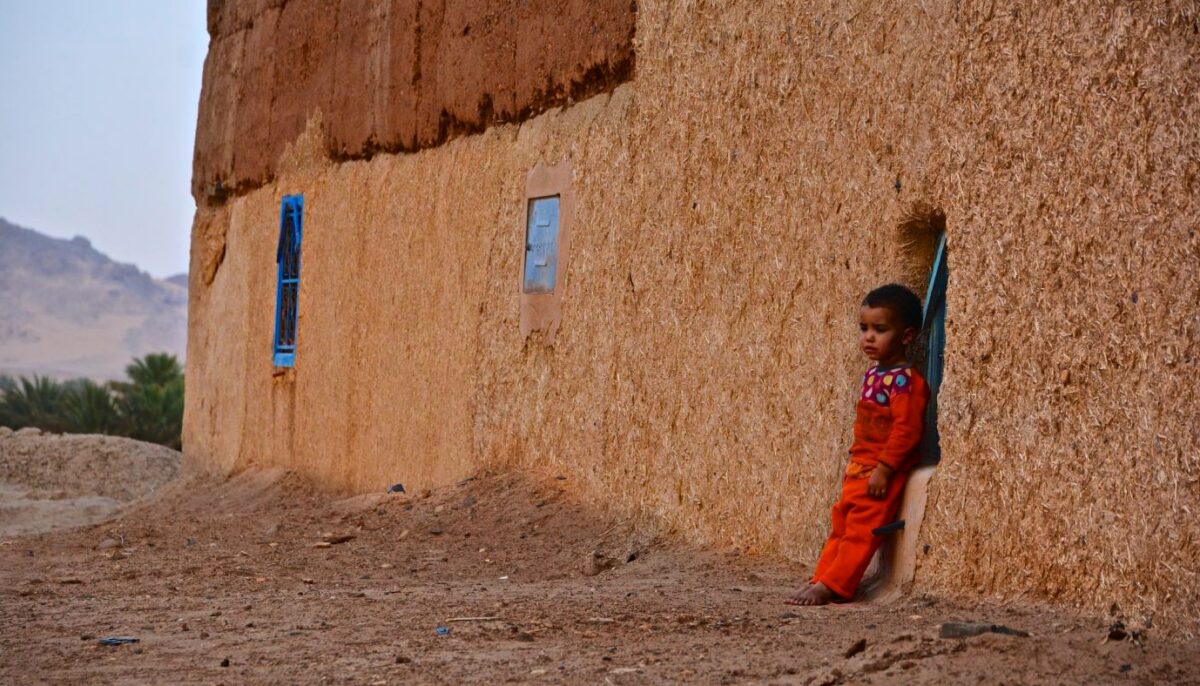On Monday, March 16 2020, the Ministry of Education in Morocco decided to halt classes across all departments and divisions, as part of the precautions aimed at limiting the outbreak and spread of COVID-19.
While Morocco was one of many countries to resort to the complete or partial closure of schools, the shift to e-learning has had detrimental effects on students residing in rural areas. In the absence of internet coverage in those regions, where families cannot even afford electronic devices, students were left with no choice but to quit.
Vast Regions in Digital Isolation
On June 12, 2020, and in the framework of rolling out remote learning, the Moroccan Ministry of Education announced implementing a series of procedures, including launching the TelmidTICE platform that provides students with their learning curriculum. However, the Ministry did not inform the residents of rural Morocco on how they will be taking part in e-learning, as they suffer from weak or non-existent mobile and internet networks. They also cannot afford buying any electronic devices.
In this regard, the High Commission for Planning (HCP), Morocco’s governmental research institution, stated that 83.5% of students in primary education have not attended their remote classes throughout the quarantine ( 79.1% of students in urban regions, and 94.6% of students in rural areas).
For instance, the residents of Timnkar in Al-Haouz Province (located in central Morocco to the East of Marrakesh) are in a total telecommunications and internet blackout. Under these circumstances, they are forced to climb rocky terrain in remote regions to receive network signal and make phone calls. The residents have been painfully demanding a decent telecommunications network that will lift them from their digital isolation.
Consecration of Disparities in Access to Education
The Coronavirus outbreak has brought to light the prevailing inequality in access to education in Morocco. In fact, not only did students residing in rural Morocco have to cross several Kilometers to reach remote schools, but the latter also lacked basic facilities such as lighting, restrooms, and drinking water. Now students face a more critical challenge: the complete absence of internet connection that would facilitate e-learning.
A teacher going by the pseudonym of Shukri told SMEX: “The village where I live suffers from very poor internet coverage and other areas have no coverage at all. It’s already difficult to make phone calls, let alone connect to the internet.”
“The objectives of e-learning did not come to fruition, as students were unable to follow the daily class schedule due to weak internet connection,” Shukri added. This has resulted in limited student turn-out in remote learning classrooms, particularly among those who have weak internet connection. As such, there are significant disparities in students’ access to classes, violating the right to education for all.
Solutions are Available Yet Challenging
As preventive measures aimed at curbing the spread of COVID-19 were rolled out in Educational Institutions, the Moroccan Ministry of Education often claimed to take the necessary measures to ensure the sustainability of e-learning, many of which were never really put to practice.
Coordinator of the “Right to access information as a litigation and governance tool” project at the “SimSim – Participation Citoyenne Association,” Zainab Bouzar suggests several effective steps and solutions to ensure equal access to e-learning. In an interview with SMEX, Bouzar claims it is “necessary, as a first step, to establish internet connection in the rural geographical scope, and to conduct a statistical study determining the number of students residing in these regions, in the aim of providing them with the electronic means required (smartphone, computer, or tablet) to attend classes remotely.”
In this context, in his study on “The Moroccan Experience in E-Learning,” Ismail Marjy proposes distributing electronic tablet devices to students, especially in rural areas, and providing all learning platform services free of charge to ensure the gratuity of education. He also suggests rolling out ICT training for teachers, on how to produce digital content which fulfills the objectives of e-learning, and for students on how to utilize learning platforms and digital resources.
These, however, will need their generous share of time, effort, and planning. As such, Marjy believes that e-learning cannot substitute for face-to-face learning, given the existing disparities in human and physical resources between rural and urban areas, adding that e-learning in its current form “may complement or boost face-to-face learning.”
Until these measures become a reality, and to avoid additionally delaying the academic year, Bouzar, a political science and political communication researcher, proposes broadcasting classes on official TV channels.
Effective, responsible solutions entail making drastic changes to protect students’ right to inclusive education. As the pandemic rages on, will the Moroccan government continue patching things up? Or will it resort to a comprehensive plan that prioritizes establishing sound infrastructure in marginalized areas?
Feature image via Antonio Cinotti’s Flickr.



